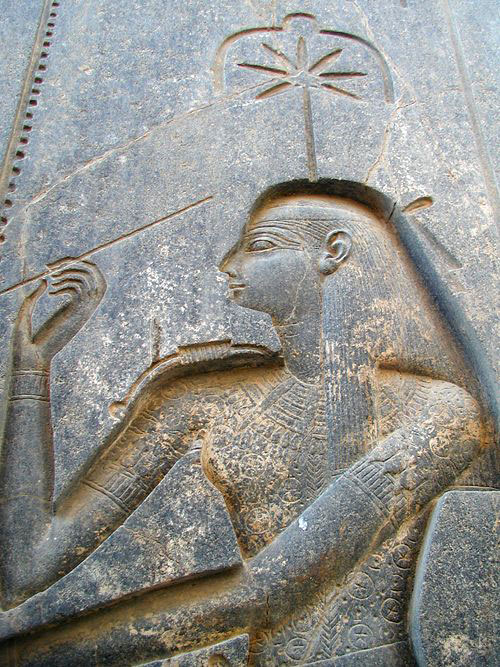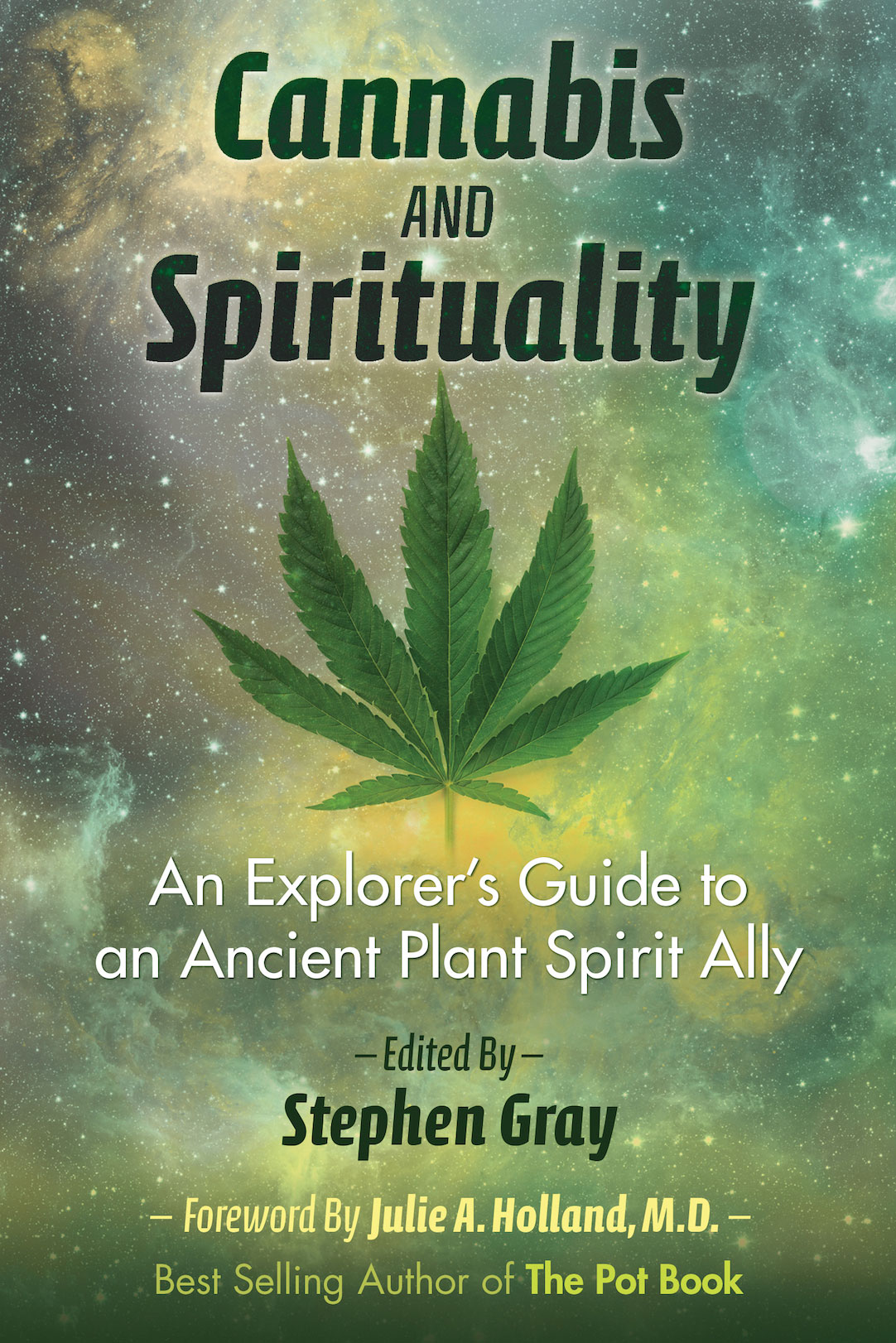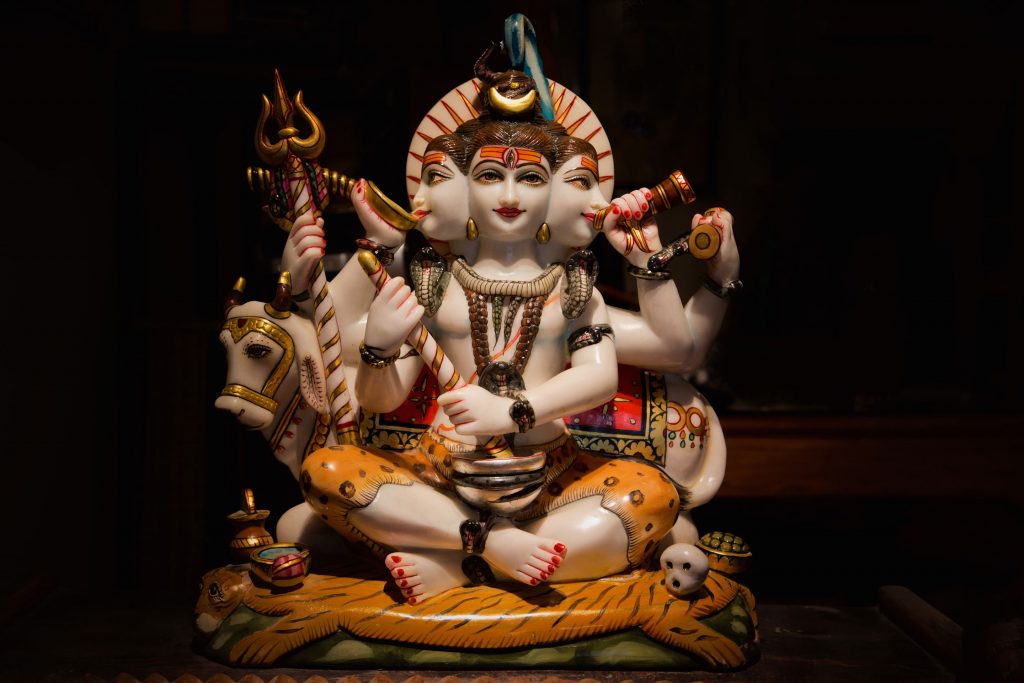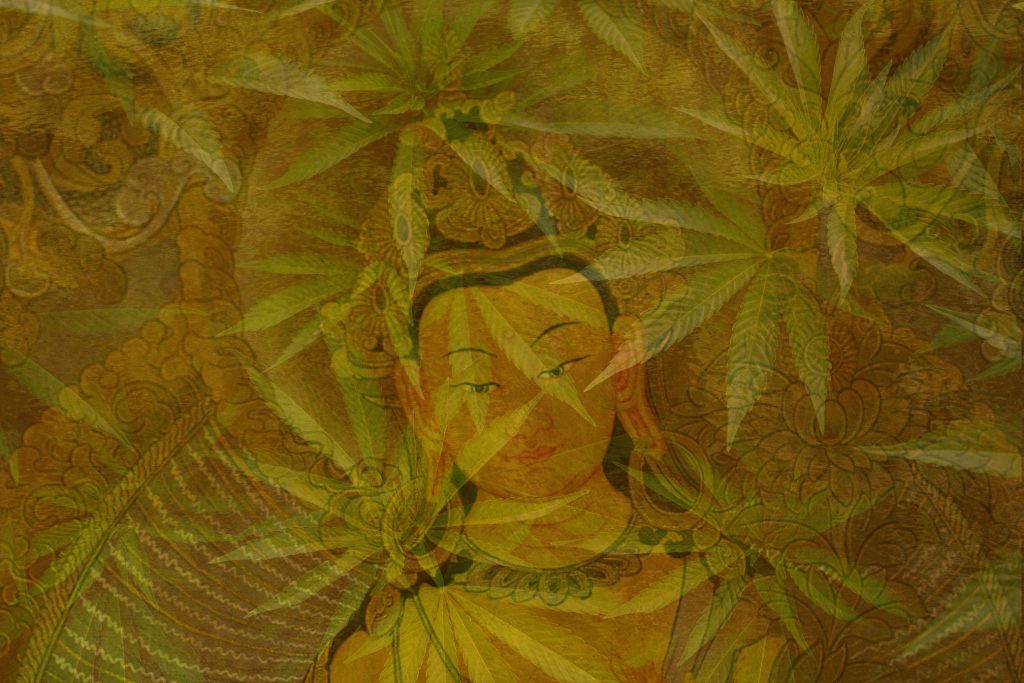Cannabis, one of the most controversial organisms to modern humankind, is also one of the most materially and non-materially productive plants on Earth.
Stephen Gray’s article combines ancient ideas with contemporary medical research. He investigates the plant’s potential to elicit mindbody intention in responsible consumers and empower humankind.
“With a stellar cast of expert contributors, Cannabis and Spirituality is a page-turning anthology of beautifully written essays, overflowing with fascinating historical facts, rare botanical knowledge, and sacred shamanic wisdom about everyone’s favourite herbal ally.”
– David Jay Brown, author of Dreaming Wide Awake
We humans are living in a remarkable historical moment. Alongside a host of other rapid and multilevel changes, we’re witnessing—and perhaps participating in—the dissolution of a period of wilful ignorance and cruelly destructive suppression of one of humanity’s greatest friends and allies in the plant world. I would be far from alone in arguing that cannabis may actually have been the single most important plant for humanity over the course of our history as a species.
For starters, though truly ancient fossil records are scant, researchers have suggested that the Cannabaceae lineage from which the cannabis plant comes is likely between 30 and 90 million years old.1 It’s safe to claim that she (more on that later) has been with us since and before the dawn of civilisation. In that regard, researchers have suggested that a conservative estimate for the beginnings of Homo sapiens’ relationship with cannabis might be approximately 12,000 years ago.2 Some have even proposed that we’ve co-evolved with the plant.3
What cannot be ignored or denied is that cannabis has been deeply intertwined in human affairs in many regions of the world for a very long time, and for a huge range of uses, including but by no means limited to such essentials as: clothing; rope, nets and sails; a variety of building materials; an array of foods; a base for cosmetics and paint; medicines of wide applicability; and most relevant to the subject matter of this essay and the project it is supporting – a spiritual ally. Few other plants have been used by so many for so long in so many places for so many purposes.
So then, what about these claims of spiritual benefit for a plant that a lot of people see as a recreational substance and is so often derided as escapist and even stupefying? Given that cannabis grows well in many different climates and has been used for multiple purposes as far back as anyone can determine, it stands to reason that the earliest humans would have discovered the plant’s mind-altering and spiritual potential as well. All you had to do was eat a little of it or toss some plants on a fire and stand close, as the nomadic Scythians of pre-Christian era Eurasia were described as doing by the Greek historian Herodotus (c.484-c.425 BCE). We know from archaeological records that shamanic and healing use of cannabis goes back to at least the Neolithic Era, roughly 7,500 years ago, where cannabis residue and paraphernalia have been found in the gravesites of shamans.4
Since that time, and especially from roughly one to two thousand years prior to the Christian era, ample record exists of cannabis’s use in the context of religious, spiritual (those two words are not always synonymous of course) and shamanic healing work.5 Both archaeological and written evidence indicate longstanding spiritual use of cannabis in various cultures and subcultures in Asia, the Middle East, Europe, Africa, and with the arrival of the Europeans about 500 years ago, here and there throughout the Americas.6
Perhaps the next question is: What is the basis for these indications and claims for the spiritual benefits of cannabis? What is it about the make-up of this complex and ancient organism that in the right conditions (more on that key point later as well) could provoke J. M. Campbell, writing in an appendix to the landmark and highly regarded Indian Hemp Drugs Commission Report of 1893-94, to conclude after extensive field study in India, that:
“In the ecstasy of bhang, the spark of the eternal in man turns into light the murkiness of matter or illusion… the soul in whom bhang finds a home glides in the ocean of Being free from the weary round of matter-blinded self.”7
Or why did Leonard E. Barrett Sr. feel confident to write in his classic 1988 ethnographic study The Rastafarians:
“The Herb is key to new understanding of the self, the universe, and God. It is the vehicle to cosmic consciousness; it introduces one to levels of reality not ordinarily perceived . . . and it develops a certain sense of fusion with all living beings.”8
These are bold proclamations. Skeptics and cynics might even call them grandiose fabrications. Some explanation is clearly in order. To begin with, there are increasingly well-understood bio-chemical explanations for how cannabis might enhance and deepen spiritual realisation. One of the ways that has been described comes courtesy of Joan Bello, author of The Benefits of Marijuana: Physical, Psychological and Spiritual (1st edition 1996), and a contributor to the book Cannabis and Spirituality: An Explorer’s Guide to an Ancient Plant Spirit Ally (Dec. 2016).
A simplified summary of Bello’s description of the pharmacokinetic action of smoked or vaporised cannabis (oral ingestion presents different issues) goes something like this: More or less immediately after inhalation, there’s a (usually) slight rise in heart rate that pumps an increased supply of rich, freshly-oxygenated blood throughout the organism, or the mindbody as she calls it. This promotes relaxation and expansion of the oppositional, skeletal muscles and deeper breathing. The result is a homeostatic balancing of the autonomic nervous system in a condition of charged equilibrium. An even simpler and more layperson-friendly way to describe this is to say that cannabis amplifies, or energises. It opens the channels. It’s not too difficult to see how this action of the plant might contribute to healing on multiple levels.
The key issue then is what you do with this amplification, this charged equilibrium. The starting point is intention. Cannabis offers us a great gift, but it’s only “great” if we channel the energy effectively. One way of saying it is that the plant, or plant spirit if you will, wants to know what you’re asking it to do. If your intention, at whatever conscious or unconscious level, is to escape—to avoid feeling, insight, engagement, and responsibility—she can graciously assist you in that direction. In other words, as a non-specific amplifier, cannabis can take you farther down whatever road you are already facing.
On the other hand, if your intention is to reveal and see things as they are, to open your heart, and to relax into unconditioned reality and “the peace that passes all understanding,” in the right conditions of set and setting, and likely with experience, the amplification capability of the sacred herb can deepen and enrich that kind of experience and realisation.
And not just in the all-too-brief embrace of the high. In fact, Joan Bello once hinted that the high is almost a side effect. The altered state wears off in a couple of hours and generally leaves the supplicant back at or very near base camp. The real spiritual work is to go beyond altered states to altered traits over time, or as legendary religious scholar Huston Smith put it, “. . . to transform our passing illuminations into abiding light.”9
One way of describing the journey of transformation from illusion to reality, from confusion to awakening, is this: Most of us have lived our lives in accordance with the stories we have taken on and developed for ourselves as we’ve struggled to find our way in this world. We cling to concepts and beliefs about what is true and what is false, real and unreal, good and bad, and so on. But this is second-hand information. It lives in our heads and is really just guess work. For most of us it’s also often confusing and dissatisfactory.
Great teachings such as those of Buddhism describe the awakening path as one of gradually—almost always—shifting our allegiance from these head-sourced narratives toward trust in the awakened state. That means learning to recognise our ability to perceive and act on the unconditioned energies and truth of this present moment. The implication of this is that we humans are eminently capable of doing that. We’re capable of trusting our own unconditioned intelligence as we experience that moment by moment with all our mindbody capabilities undistorted and unfettered.
Whether or not you think of yourself as a spiritual person or are even interested in spirituality is irrelevant. We’re all on a spiritual journey whether we know it or not. As one old master pointed out, enlightenment is a continual irritation to the conventional mind struggling to maintain itself. We may be on a path of self-destruction, of ignorance, or of awakening, but we are all in some relationship with unconditioned reality. That means that these principles are relevant to all humans. It really just comes down to living well on our brief visit to planet Earth.
What does all that have to do with cannabis? Again, because of its non-specific amplification capability, with directed intention and disciplined attention, cannabis can enter us more deeply into this present moment and contribute to the process of seeing through illusion and landing on what is.
This journey – from the second-hand guesswork of the confused ego to the calm and open-hearted unconditional confidence of nowness – requires us to learn how to get out of our heads to a great degree. The compulsive thinking mind is our predominant strategy for obscuring the ever-present truth beyond our concepts. Echkhart Tolle sized this up succinctly in The Power of Now: the ideal relationship with our thinking mind is to use it as a tool we can pick up when needed and put back down when not. Another way of putting this is that instead of thinking life we are learning to feel life—in the most encompassing meaning of the word feel.
And how do we make that understanding real and lasting? It may require discipline, perseverance, and courage, like the courage to expose our hidden obstacles and unresolved wounds to the light, and the courage to preside over the falling away of our comforting but limiting stories. It may require us to engage in spiritual practices with the assistance of the cannabis plant.
I’m using the term spiritual practices in an open-ended, non-dogmatic way. Practices that can help channel the amplified cannabis energy range from what you might call formless practice to increasing levels of form, and then transcend any conventional notion of spiritual practice whatsoever to include walking in the woods, making love, or even washing the dishes. It depends on the quality of attention you bring to the activity.
At the formless or almost formless end of the continuum, “practice” could be as simple as psychedelic philosopher Terence McKenna’s advice to “sit down, shut up, and pay attention.” If that’s too formless, basic follow-the-breath type meditation practices can be very effective for channeling the cannabis energy into deepening presence. Moving into practices with more form, any number of “one-pointed concentration” practices can work well with the skilful inclusion of the herb. This could include yoga, tai-chi, chant and song, shamanic drumming, visualisation practices, sacred dance and many more. The co-mingling of yoga and cannabis practice is an excellent example of this harmonious mutual support. There’s an explosion of new activity in this area with bold innovators such as Dee Dussault, author of the new book Ganja Yoga and a contributor to Cannabis and Spirituality.

Ancient Egyptian Seshat, commonly known as the goddess of wisdom and writing, depicted on the throne of Rameses II, Luxor Temple, Egypt.
I said I’d circle back to the idea of cannabis as a “she.” Many will agree that the source of much of humanity’s problems is an imbalance toward masculine, yang, control and dominator energies. It may seem like strength but at root this kind of armored personality is afraid and entangled in a continual effort to cover over that fear. Effective use of cannabis as a spiritual medicine brings about a softening of the armor and a developing trust in our ability to feel our way through life without the crutch of ego’s confused and insecure second-hand guesswork. In that softening we begin to find real, unconditional strength. We’re learning to relax down out of our heads into what Buddhist teachings call awakened heart.
There’s more to this story than I can squeeze into this short article that is fleshed out by the 18 contributors to Cannabis and Spirituality. The book is designed to offer applicable, user-friendly information and inspiration. In that spirit, I want to stress that inner silence is the clearest gateway to reality, and for that reason the most difficult state for most humans to allow. We fear the non-existence of this false or provisional personality we’ve cobbled together.
For practical purposes, what this means for us is that we learn how to lay down that tool when we don’t need to use it and be fully here. Cannabis is a kind and unexpectedly powerful spiritual medicine. She’s a healer, she’s a shaman, and she does her best work when we surrender to her, when we give her our undivided attention and trust. In the midst of whatever other practice or activity we’re engaged in, there can be great reward and authentic consciousness transformation in coming back often to the source, to the well-spring. As the great mystic poet Rumi put it, “Look past your thoughts so you may drink the pure nectar of This Moment.”10
Cannabis is an effective spiritual medicine when met skilfully with the intention to heal and to awaken the spirit and when included in an ongoing mindfulness and awareness practice. The sacred herb has always been and will always be the people’s plant, kindly bent to serve us. She is right here with us, she is safe if used wisely, and she can be the sacrament of peace for a struggling humanity.

© Wendy McCormick wendymccormick.com
References:
1. There is disagreement here, as there is no concrete evidence as to when the Cannabis genus diverged. According to an article on SensiSeeds, “traces of Cannabaceae species have been found in Cretaceous fossils dating from up to 93.5 million years ago . . .” Please note, however, that no specific scientific study is cited here. The common consensus amongst researchers like McPartland and Guy, (2004a) is that the Cannabaceae lineage evolved “no earlier than 34 million years ago.”
2. Springer, Marihuana, The First Twelve Thousand Years
3. Clark and Merlin, Cannabis: Evolution and Ethnobotany, p. 366
4. Rätsch, Marijuana Medicine, p. 16
5. Bey and Zug, Orgies of the Hemp Eaters. Numerous researchers and historians have described the spiritual use of cannabis through the ages. See “Further Reading” below for some examples.
6. Rätsch, p. 144
7. Campbell, “On the Religion of Hemp,” in Orgies of the Hemp Eaters by Bey and Zug, p. 20
8. Barrett, The Rastafarians, p. 255
9. Smith, from goodreads.com/quotes
10. Rumi, from goodreads.com/quotes
Further Reading:
Barrett, Leonard E. Sr. The Rastafarians, Revised ed. Boston: Beacon Press, 1997.
Bello, Joan. The Benefits of Marijuana: Physical, Psychological, and Spiritual. Cottonwood, Calif.: Sweetlight Books, 1996.
Bennett, Chris, Lynn Osburn, and Judy Osburn. Green Gold the Tree of Life: Marijuana in Magic and Religion. Fraser Park, Calif.: Access Unlimited, 1995.
Bey, Hakim, and Abel Zug, eds. Orgies of the Hemp Eaters. Brooklyn, N.Y.: Autonomedia, 2004.
Booth, Martin. Cannabis: A History. London: Doubleday. 2003.
Dolce, Joe. Brave New Weed: Adventures into the Uncharted World of Cannabis, N.Y.: HarperCollins, 2016.
Dussult, Dee. Ganja Yoga: Harper One, 2017.
Estren, Mark. One Toke to God: The Entheogenic Spirituality of Cannabis. Malibu, Calif.: Cannabis Spiritual Center, 2017.
Ferrara, Mark. Sacred Bliss: A Spiritual History of Cannabis. Lanham, Maryland, Rowman & Littlefield, 2016.
Gaskin, Stephen. Cannabis Spirituality. New York: High Times Books, 1996.
Gray, Stephen. Returning to Sacred World: A Spiritual Toolkit for the Emerging Reality. Hants, U.K. John Hunt Publishing, 2010.
Herer, Jack. The Emperor Wears No Clothes: Hemp and the Marijuana Conspiracy. 12th ed. Van Nuys, Calif.: Ah Ha Publishing, 2010.
Holland, Julie, ed. The Pot Book: A Completer Guide to Cannabis. Rochester, Vt.: Park Street Press, 2010.
Lee, Martin A. Smoke Signals: A Social History of Marijuana—Medical, Recreational, and Scientific. N.Y.: Scribner, 2012.
Rätsch, Christian. Marijuana Medicine. Rochester, Vt.: Healing Arts Press, 2001.
Robinson, Rowan. The Great Book of Hemp. Rochester, Vt.: Park Street Press, 1996.
Trungpa, Chögyam. Shambhala: The Sacred Path of the Warrior. Boston. Shambhala Publications, 1988.
Stephen Gray is a teacher and writer on spiritual subjects and sacramental medicines. He has worked extensively with Tibetan Buddhism, the Native American Church, and with entheogenic medicines. The author of Returning to Sacred World: A Spiritual Toolkit for the Emerging Reality, he is also a conference and workshop organizer, leader, and speaker as well as a part-time photographer and music composer under the artist name Keary. He lives in Vancouver, British Columbia.












Great spirit in this one. Thanks for sharing your experience and insight. Your work inspires like the medium that it refers to. Peace from Trueherbsman at The Hemp Consulate in Seattle.
Always a pleasure to read intelligent, articulate examinations of a phenomenon that doesn’t date back to the Jazz Age, but to the distant past, when the spiritually inclined shaman made epic voyages on behalf of his tribe or clan. Those explorations formed the basis of much of our culture and philosophy and Mr. Gray is to be commended for bringing that to light–this article is an education.
Perhaps, Robert S. de Ropp’s “The Master Game” should have been included in “Further Reading.”
Awesome read and contribution, thank you Stephen!
I found Cannabis and Spritualitly to be such an interesting, inspirational and informative read. It’s really brings a realm of the plant medicine from Cannabis into a different light.
Thank you for your interesting article. I believe Cannabis will be used more and more now that She has been largely removed from fear-based propaganda stories. I would love to see Cannabis back to where She was a Shaman’s medicine plant who could show that shaman whatever he came to ask. On my sacred journeys with Cannabis I feel Her presence; to me she is a stern mistress, I need to be very clear with my intent when I visit Her. As a graduate of Dr Alberto Villoldo’s shamanic energy medicine schooling twenty years ago, my experiences in Other Realms is very healing, to me, and to clients I have worked with. Cannabis and spirituality go hand-in-hand, helping us to let go of our minds and return to our hearts.
It was a treat to read what a Shaman, if I may use the term, had to say. The article was filled with inspiration. Now on to finding the book and more.
In working with the “psychospiritual” aspect of the plant in “Elevation Ceremonies”, I find this a most precise and informed overview. I particularly love Stephen’s elegant summation of the patriarchy (“imbalance toward masculine, yang, control and dominator energies”) and his keen analysis that this armoring (e.g. Trump administration) is simply, in the end, a masking of fear. As we move through the tumult of this eruptive paradigm shift in which we find ourselves, I hold close to my heart the intention that our beloved cannabis as a spiritual ally will help lead us out of these shadow times and into a collective manifestation of love and peace. To paraphrase one of the many ways Terence McKenna mused about it: The Plant and the Planet have a Plan.
I’m not trying to argue with you but merely pointing out that it’s not just the trump administration, all administrations including obama or Clinton’s, if elected. None of them care about you. They all lie! Stop being fooled, It’s like wwf wrestling. They are two sides to the same coin. We shouldn’t let any of them get away with it. Both sides!!
Great article.